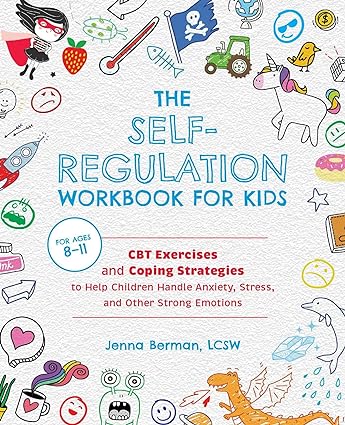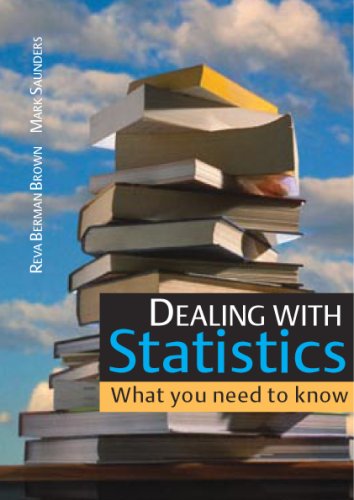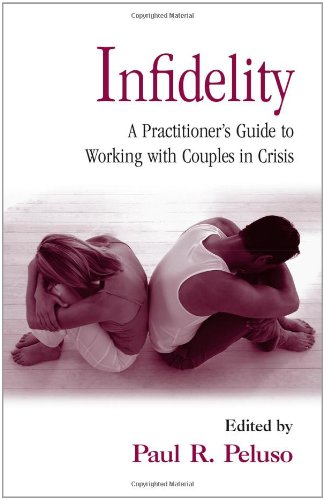موضوعات
آموزش و پرورش
ادبیات و زبان
پزشکی، دندانپزشکی و داروسازی
تاریخ و جغرافیا
داستان و رمان
دیگر
دین و فلسفه
روانشناسی
ریاضیات و آمار
سلامتی، تناسب اندام و رژیم غذایی
شیمی و پلیمر
علوم اجتماعی و حقوق
علوم زیستی و بیوتکنولوژی
فیزیک و نجوم
کامپیوتر و اینترنت
کتابهای کودکان و داستان
کسب و کار و اقتصاد
کشاورزی و دامپزشکی و غذا
معماری
مهندسی و فناوری
هنر و تئاتر
محصولات
The Self-Regulation Workbook for Kids: CBT Exercises and Coping Strategies to Help Children Handle Anxiety, Stress, and Other Strong Emotions - Epub + Converted Pdf
نویسندگان: خلاصه: The Self-Regulation Workbook for Kids: CBT Exercises and Coping Strategies to Help Children Handle Anxiety, Stress, and Other Strong Emotions by Jenna BermanYou Can Read Anyone: Never Be Fooled, Lied to, or Taken Advantage of Again - PDF
نویسندگان: خلاصه: Have you ever wished you could peer into someone’s mind to find out what he or she is really thinking? Now you can . . . really. This book is not a collection of recycled ideas about body language. It does not suggest that a woman’s hairstyle will give us unprecedented access into her soul, neither does it draw wildly ambiguous generalities about people based on our intuition or gut instinct, nor does it reach conclusions based on how she folds her hands or he ties his shoelaces. This book contains specific, proven psychological techniques that can be applied instantly to any person in just about any situation. Dr. Lieberman has demonstrated the ease and accuracy of these techniques on hundreds of television and radio programs. In a special report for FOX News, host Jeff Rosin declared, “It’s simply amazing! I was with him and he was never wrong . . . not even once. I even learned how to do it and that’s saying something.” In fact, Dr. Lieberman has gone “head-to-head” on live television, with skilled polygraph examiners and scored just as well—every time. You Can Read Anyone shows step-by-step exactly how to tell what someone is thinking and feeling in real-life situations. For example, you will see precisely how to determine whether another poker player will stay in or fold, whether a salesperson is trustworthy, or whether or not a first date is going your way or the other way. And when the stakes are high—negotiations, interrogations, questions of abuse, theft, or fraud-- knowing who is out for you, and who is out to get you (or a loved one) can save you time, money, energy, and heartache.Healing Psalms: The Dialogues with God That Help You Cope with Life - PDF
نویسندگان: خلاصه: A prominent rabbi shows how to apply the wisdom of the Psalms in our daily livesTraditionally attributed to King David, among others, the book of Psalms collects 150 songs in praise of the Lord-songs that contain some of the Bible's most beautiful and inspiring verses. Now, one of America's most esteemed rabbis elucidates the meaning of the Psalms and explains how their healing wisdom can help us in our everyday lives. Examining each of the Psalms in turn, Rabbi Joshua Haberman shows how these "dialogues with God" offer comfort in our struggles to cope with adversity and improve our lot in life, whether we're seeking deliverance from suffering, giving praise for our good fortune, or commemorating a special occasion. Though this is the only mainstream book on the Psalms written by a rabbi, the book is for people of all spiritual traditions-Jews, Christians, and people of any tradition who want to tap into the healing power of the Psalms.Joshua O. Haberman (Washington, DC) is President of the Foundation for Jewish Studies. The former Senior Rabbi at the Washington Hebrew Congregation, he has preached at the White House and at the nationally televised memorial service to honor victims of 9/11.You Can Read Anyone - PDF
نویسندگان: خلاصه: Have you ever wished you could peer into someone’s mind to find out what he or she is really thinking? Now you can . . . really. This book is not a collection of recycled ideas about body language. It does not suggest that a woman’s hairstyle will give us unprecedented access into her soul, neither does it draw wildly ambiguous generalities about people based on our intuition or gut instinct, nor does it reach conclusions based on how she folds her hands or he ties his shoelaces. This book contains specific, proven psychological techniques that can be applied instantly to any person in just about any situation. Dr. Lieberman has demonstrated the ease and accuracy of these techniques on hundreds of television and radio programs. In a special report for FOX News, host Jeff Rosin declared, “It’s simply amazing! I was with him and he was never wrong . . . not even once. I even learned how to do it and that’s saying something.” In fact, Dr. Lieberman has gone “head-to-head” on live television, with skilled polygraph examiners and scored just as well—every time. You Can Read Anyone shows step-by-step exactly how to tell what someone is thinking and feeling in real-life situations. For example, you will see precisely how to determine whether another poker player will stay in or fold, whether a salesperson is trustworthy, or whether or not a first date is going your way or the other way. And when the stakes are high—negotiations, interrogations, questions of abuse, theft, or fraud-- knowing who is out for you, and who is out to get you (or a loved one) can save you time, money, energy, and heartache.Dealing with Statistics: What you need to know - Original PDF
نویسندگان: خلاصه: ‘This is a highly accessible, yet an adequately sophisticated text, which can be enjoyed by students across the skills spectrum. I am confident that it will help students who suffer from maths phobia as it offers to teach statistics with anxiety-busting clarity. The book benefits from easy to follow demonstrations and illustrations of statistical methods and techniques, which are highly relevant for business and management research at the undergraduate and masters level courses.’ Professor Mustafa F. Ozbilgin, University of East Anglia, UK Are you confused about which statistical tests to use, when you should be using them and why you should be using them? This book is about helping you to choose and use the right statistical technique to analyse your data and write about your results and findings convincingly. It provides a concise and accessible guide to the essential statistical skills needed for success in your assignment, project or dissertation. Berman Brown and Saunders concentrate on particular statistical tests and their three Ws – what, why, and when. They provide you with the tools to choose the graphs and statistics that are suitable for your data, and to understand what the statistical results actually mean. In addition, the book: Explains why it is impossible to avoid using statistics in analysing data Describes the language of statistics to make it easier to understand the various terms used for statistical techniques Deals with using tables and charts to present data so that they are easy to understand Explains the statistics used to describe data used to infer differences and relationships. The book also includes a handy alphabet of statistics as well as a glossary of key statistical terms.Messverfahren und Klassifikationen in der muskuloskelettalen Radiologie - Original PDF
نویسندگان: خلاصه: Vorwort „Die besten Bücher sind die, von denen jeder Leser meint, er hätte sie selbst machen können.“ Blaise Pascal, französischer Mathematiker, Physiker und Philosoph (1623–1662) In kaum einer Subdisziplin der klinischen Medizin findet man wohl eine solch verwirrende Vielzahl von Messver- fahren und Klassifikationssystemen wie in der orthopädi- schen Diagnostik. Ganz sicher aber sind es genug, um als Radiologe, Orthopäde oder Unfallchirurg nicht immer alle Methoden und Referenzwerte „im Kopf“ haben zu können. Dieses Problem ist, wie auch die Idee zu diesem Buch, nicht neu. Als ich während meiner Ausbildung an der Universität Münster begann, mich mit der orthopädischen Radiologie zu beschäftigen, existierte an unserem radiologischen Skelettarbeitsplatz als wichtiges Utensil ein Aktenordner, der als Loseblattsammlung Kopien aus unterschiedlichs- ten Lehrbüchern und Zeitschriften enthielt. Die von mei- nen Vorgängern zusammengetragenen Blätter fassten in ungeordneter Folge wichtige Messungen und Klassifika- tionen zusammen, die zwar mehr oder weniger häufig eingesetzt wurden, aber offensichtlich nur schwer in das Langzeitgedächtnis des jeweiligen Befunders zu überfüh- ren waren. Das im Laufe der Jahre durch Gebrauchsspuren recht unansehnlich gewordene Lehrwerk wurde von mei- nen damaligen Kollegen und mir schlicht der „Ordner“ genannt, als unverzichtbares Hilfsmittel angesehen, arg- wöhnisch gehütet und ständig um weitere Seiten und An- merkungen ergänzt. Eine ganz ähnliche Sammlung, allerdings in elektroni- scher Form, wurde später an der Technischen Universität München von Assistenzärzten des Skelettarbeitplatzes er- stellt. Diese erreichte zwar nach meinem persönlichen Empfinden nie den Charme des alten „Ordners“, hatte je- doch bezüglich Modernität, Ordnung und Verfügbarkeit und letztlich auch unter hygienischen Gesichtspunkten Vorteile. Außerdem stellt sie den direkten Vorläufer dieses Buches dar. In diesem Buch werden verschiedenste Messverfahren und Klassifikationssysteme aus allen Bereichen der mus- kuloskelettalen Radiologie mit Ausnahme der Frakturleh- re (damit ließe sich ein weiteres Buch füllen) dargestellt, ohne Anspruch auf Vollständigkeit zu erheben. Die Auto- ren haben versucht, nach Möglichkeit auf die Originalpu- blikationen zurückzugreifen, um Fehler durch inkorrekte „Überlieferung“ gebräuchlicher Methoden zu vermeiden. Neben der Erläuterung von Messverfahren und Klassifika- tionskriterien wurde der Versuch unternommen, den tat- sächlichen praktischen Stellenwert der einzelnen Metho- den zu beleuchten. Weitgehend veraltete Verfahren und Systeme wurden gar nicht oder nur mit entsprechenden Anmerkungen in die Sammlung aufgenommen.Environmental Regulations and Industrial Competitiveness Case Studies of Toxic Industries in Southern California - Original PDF
نویسندگان: خلاصه: 1 Chapter 1 Environmental Regulations and Industrial Competitiveness Abstract Industries in the U.S. emit billions of pounds of toxic chemicals into the environment every year, resulting in a major risk to human health. Many economists and policy makers, however, are strongly opposed to environmental regulations based on an assumption that regulations lead to a loss of jobs and a declining stan- dard of living for U.S. citizens. The empirical literature on this question has pro- duced mixed results, and this chapter critically assesses several conceptual and methodological issues that are embedded in this literature. Our thesis is that strin- gent environmental regulations have the potential to effectively and efficiently reduce toxic emissions from polluting firms and industries while having a negligible impact on the economic competitiveness of firms and industries. We investigate this thesis through three empirical case studies of polluting industries in Southern California that are highly regulated by the South Coast Air Quality Management District (AQMD): metal finishing, wood furniture, and dry cleaning. We also attempt to reveal the institutional process by which firms comply with environmen- tal regulations. Keywords Environmental regulations · Economic competitiveness · Environmental pollution · Economic externalities · Market failure · Environmental compliance · Technological uncertainty · Innovation · Adoption Introduction Over the last half century, the US federal government has played an active role in regulating the emission of toxic chemicals from polluting firms and industries (Rosenbaum, 2019; Telsey, 2016). Congress passed the Clean Air Act of 1970 “to protect and enhance the quality of the nation’s air resources so as to promote the public health and welfare and the productive capacity of the population” (US Environmental Protection Agency, 2007, p. 2). Congress also created the EPA (Environmental Protection Agency) in 1970 to implement and enforce the nation’s environmental lawCouples and Family Therapy in Clinical Practice - Original PDF
نویسندگان: خلاصه: Fifth edition of a classic text that views couples and family therapy through a psychiatric lens Written by clinicians with a biopsychosocial perspective on illness and family dysfunction Draws on case studies to present family-oriented interventions in an accessible manner Explores underlying principles along with a wide range of practical therapeutic techniques Culturally inclusive, enabling readers to work with patients from diverse backgroundsInfidelity: A Practitioner's Guide to Working with Couples in Crisis (Family Therapy and Counseling) - Original PDF
نویسندگان: خلاصه: When one partner in a relationship is unfaithful to the other, it takes a lot of work by both parties involved to salvage the relationship. In today’s therapy-friendly climate, marriage/couples counseling is often a part of that rebuilding process. Many couples seek out professional therapy after an affair is out in the open, but often the act of infidelity is revealed while uncovering and discussing unrelated issues for which the couple is in counseling. And yet, amazingly, as common as this complex and difficult topic arises in therapy, there is relatively little professional literature devoted to understanding and "treating" infidelity. In this volume, Paul Peluso has assembled a truly impressive list of contributors from a range of disciplines and backgrounds, including marital therapy, family therapy, evolutionary psychology, marriage research, and cyberstudies, with the aim of filling this void.آیا کتاب مورد نظر هنوز بر روی سایت قرار نگرفته است؟ جای نگرانی نیست! کافی است بر روی گزینه سفارش کتاب کلیک کرده و درخواست خود را ثبت کنید. در کمتر از چند ساعت کتاب شما را آماده خواهیم کرد.









